Fractions can be tricky for elementary students because they represent a new way of thinking about numbers. Instead of whole units, children must understand parts of a whole. With the right steps, teaching fractions can be smooth, fun, and effective.
Step 1: Build conceptual understanding with real objects
Before introducing numbers and symbols, help students see fractions in the real world.
Use food: Cut a pizza, apple, or sandwich into equal parts. Show how “1 out of 4 slices” is one-fourth.
Folding paper: Have students fold paper into halves, thirds, or fourths to visualize equal parts.
Hands-on activity: Give students fraction circles, bars, or LEGO bricks to compare sizes.
Teaching tip: Emphasize equal parts—students must understand this before moving forward.
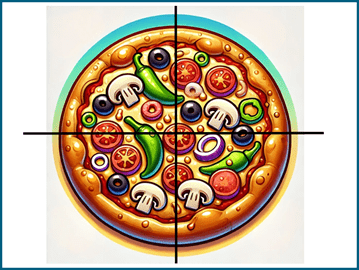
Step 2: Introduce fraction vocabulary
Once students see fractions, give them the language to describe them.
Numerator: the top number, tells how many parts are shaded/used.
Denominator: the bottom number, tells how many equal parts in total.
Examples: “In this circle, 1 is shaded out of 2. That’s ½.”
Teaching tip: Have students practice reading fractions aloud, e.g., “two-thirds” not “two over three.”
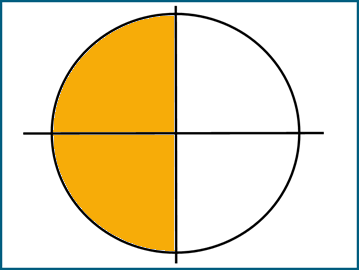
Step 3: Connect fractions to number lines
Students often think fractions are just “pizza slices.” Show that fractions also live on a number line.
Start with 0 to 1 and mark halves (0, ½, 1).
Add fourths (0, ¼, ½, ¾, 1).
Compare fractions visually: ½ is bigger than ¼.
Teaching tip: Relating fractions to measurement (like rulers) reinforces real-world use.
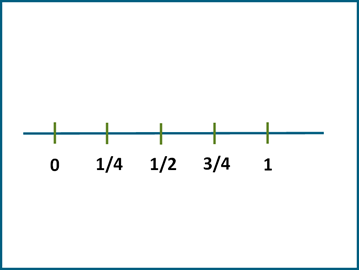
Step 4: Compare fractions
Help students decide which fractions are larger or smaller.
Same denominator: 3/8 vs. 5/8 → the bigger numerator wins.
Same numerator: 2/3 vs. 2/5 → fewer parts = bigger pieces.
Hands-on tools: Use fraction strips or visual models to compare.
Teaching tip: Avoid rushing into cross-multiplication too early—keep it visual first.
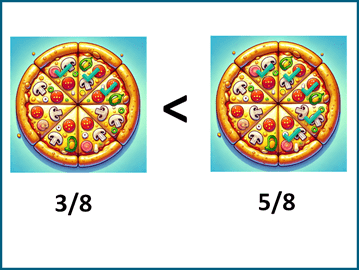
Step 5: Equivalent fractions
Show that fractions can look different but mean the same thing.
Fold paper: ½ = 2/4 = 4/8.
Use number lines or multiplication: multiply numerator and denominator by the same number.
Encourage “fraction families.”
Teaching tip: Have students color fraction strips to find all the ways to make “½.”
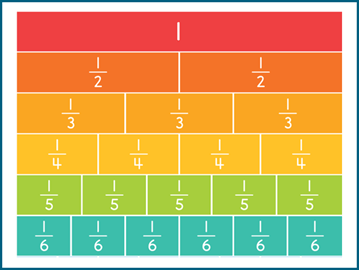
Step 6: Adding and subtracting fractions
Begin with same denominators before moving to different ones.
Example: ⅓ + ⅓ = ⅔.
Use visuals: fraction bars make this concrete.
Then introduce common denominators with small numbers.
Teaching tip: Keep it simple at first. Stick to halves, thirds, and fourths before tackling tenths or twelfths.
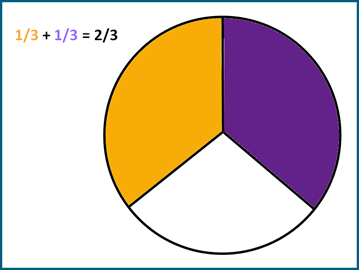
Step 7: Apply fractions to real life
Make fractions meaningful by connecting them to daily life.
Cooking: “The recipe needs ¾ cup of sugar.”
Sports: “He played ½ the game.”
Classroom polls: “⅔ of the class prefers chocolate ice cream.”
Teaching tip: Let students make up their own fraction word problems—it boosts ownership and understanding.
Teaching fractions is most effective when it moves from concrete → pictorial → abstract. Start with hands-on exploration, move to drawings and visuals, and finally introduce numbers and equations.
Frequently asked questions about teaching fractions
Q: Why do kids struggle with fractions?
A: Fractions can be challenging because they introduce a new way of thinking about numbers. Children are used to whole numbers, and now they must understand that numbers can represent parts of a whole. Visuals, hands-on activities, and real-life examples help bridge the gap.
Q: In what grade do kids start learning fractions?
A: Fractions are typically introduced in Grade 1 or 2, beginning with simple halves, thirds, and fourths. By Grade 4 and 5, students work with equivalent fractions, comparing fractions, and operations like addition and subtraction.
Q: How do you teach fractions to struggling learners?
A: Go back to the basics. Use food, paper folding, and fraction strips to show equal parts. Keep lessons hands-on and visual before moving to abstract numbers. Repetition, games, and real-world applications can also help build confidence.
Q: What are equivalent fractions?
A: Equivalent fractions are different fractions that name the same amount. For example, ½, 2/4, and 4/8 all represent the same value. Teaching students how to find and recognize equivalent fractions strengthens their number sense.
Q: Why are fractions important?
A: Fractions are everywhere in daily life, from cooking and sports to telling time and measuring. Mastering fractions also builds a foundation for more advanced math concepts like decimals, ratios, and percentages.
Q: What are the first fractions kids should learn?
A: Start with simple fractions like ½, ⅓, and ¼. These are easy to show with food, paper folding, and fraction strips. Once students understand these, you can introduce more complex fractions like ⅙, ⅛, and beyond.
Q: How do you explain fractions to kids who only think in whole numbers?
A: Begin with something familiar, like sharing a pizza or chocolate bar. Ask, “If we cut it in half and you eat one piece, how much did you eat?” This helps them see that fractions are just parts of a whole.
Q: What’s the best way to move from visual fractions to numbers?
A: Pair models with symbols. For example, show a circle split into 4 equal parts with 1 shaded, then write “¼” under it. Gradually reduce the models as students get more comfortable.
Q: How do I know if my kids are ready for adding and subtracting fractions?
A: Make sure they can:
Recognize fractions on number lines.
Compare and order fractions.
Understand equivalent fractions.
If they can do these, they’re ready to begin adding and subtracting fractions with the same denominators.
Q: Should fractions be taught before decimals?
A: Yes. Fractions usually come first (around grade 1-2) because they’re more concrete. Decimals are introduced later (around grade 3-4) as another way to represent parts of a whole.
Q: How can parents support fraction learning at home?
A: Parents can use cooking, board games, and even grocery shopping to reinforce fractions. For example, ask: “We need ¾ cup of sugar. If the measuring cup is ¼, how many scoops do we need?”

